Mechanical Harvesting of Ornamental Citrus Trees in Valencia, Spain
Abstract
1. Introduction
2. Materials and Methods
2.1. Harvesting Systems
2.1.1. Manual
2.1.2. Trunk Shaker
2.1.3. Trunk Shaker with Umbrella
2.1.4. Light Shaker (SMTA) Coupled to a Pedestrian Tractor
2.2. Trees and Fruits
2.3. Trees Placing in Valencia (Spain)
- The trees harvested with trunk shaker and SMTA were placed in Av. Tarongers (Googlemaps coordinates 39.479410, -0.342584).
- The trees harvested with shaker plus umbrella were placed in several streets and avenues in the North sector of the city of Valencia (between the Turia river and the North border of the city). The zones were the field capacity was measured were:
- Zone: Av. Emilio Baró. This zone is a long avenue (1100 m) with cars parked on one-side and a bus lane on the other. The advantage of working on the trees near the bus lane is that there are no parked vehicles and the machine can move freely. On the other side, some drivers do not move their cars, which makes the harvesting of the trees difficult.
- Zone: Benimaclet. This area is characterized by short streets (100–300 m), with vehicles parked on one or both sides of the street, some of which were not removed prior to the passing of the machine, thereby causing more interruptions to the work.
- Zone: Av. Naranjos. This zone is a line of trees placed parallel to the tram lane, there are no problems with parked cars, but as the work is done at the same time as trams passes, operators must pay attention to the tram and the umbrella can not be opened, meaning that most of the oranges fall directly to the ground.
2.4. Measuring Instruments
- Action camera ‘Go-Pro’ model ‘Hero-4′ (GpPro, Inc., San Mateo, CA, USA; www.gopro.com) to record all the movements of the machines in order to measure the time necessary to accomplish each operation.
- Camera ‘Casio’ model ‘Exilim Pro EX-F1′ (Casio Computer Co., LTD, Tokyo, Japan; www.casio.com) to take pictures of the trees before and after shaking to make estimations of detachment percentages. It was also able to record tree movement at 300 fps and so provided a better characterization of the vibration process and to measure the detachment rhythm.
- A triaxial accelerometer and recorder (Gulf Coast Data Concepts, LLC, Waveland, MS, USA; http://www.gcdataconcepts.com), ‘US Coast GCDC X200-4′, that recorded the vibrations at 400 Hz, was attached to the trunks close to the shaker clamps.
- A dynamometer ‘Andilog Center model CNRxx250 (Andilog Technologies, Chaville, France)’ to measure the fruits’ traction forces.
2.5. Detachment Efficiency Estimation
- D, was the detachment percentage (%),
- F, the number of detached fruits,
- T, the total number of tree fruits.
3. Results
3.1. Accelerations
3.1.1. Trunk Shaker
3.1.2. Trunk Shaker with Umbrella
3.1.3. SMTA/ Lamborghini Plus 990-F
3.1.4. SMTA/John Deere 5820
3.1.5. Comparison of the Vibrations Reached with Each Equipment
3.2. Detachment and Collecting
3.2.1. Trunk Shaker
3.2.2. Trunk Shaker with Umbrella
3.2.3. SMTA
3.3. Field Capacity
3.3.1. Manual
3.3.2. Trunk Shaker
- (1)
- tractor with shaker: 51 tree h−1
- (2)
- workers for traffic control + 12 workers collecting and transporting the fruit to the lorry: 51 tree h−1, and the equivalent for one operator:51 × 14−1 = 3.64 tree h −1.
3.3.3. Trunk Shaker with Umbrella
3.3.4. SMTA
3.3.5. Field Capacity Comparison
3.4. Tree Damages
3.5. Economical Study
4. Discussion
4.1. Trunk Shaker
4.2. Trunk Shaker with Umbrella
4.3. SMTA
5. Conclusions
Author Contributions
Funding
Acknowledgments
Conflicts of Interest
References
- Moreno, P. El retraso en la recogida llena las calles de Valencia de naranjas por el fuerte viento. Las Provincias. 8 February 2017. Available online: http://www.lasprovincias.es/valencia-ciudad/201702/09/retraso-recogida-llena-calles-20170208234530-v.html (accessed on 1 March 2017). (In Spanish).
- Whitney, J.D. Mechanical removal of fruit from citrus trees. Proc. Int. Soc. Citric. 1977, 2, 407–412. [Google Scholar]
- Hedden, S.L.; Whitney, J.D.; Churchill, D.B. Trunk shaker removal of oranges. Trans. ASAE 1984, 27, 372–374. [Google Scholar] [CrossRef]
- Sanders, K.F. Orange harvesting systems review. Biosyst. Eng. 2004, 90, 115–125. [Google Scholar] [CrossRef]
- Liu, T.H.; Ehsani, R.; Toudeshki, A.; Abbas, M.; Zou, X.J. Shaking functionality evaluation of four different types of citrus canopy-shaker tines. Appl. Eng. Agric. 2018, 34, 809–817. [Google Scholar] [CrossRef]
- Gupta, S.K.; Ehsani, R.; Kim, N.H. Optimization of a Citrus Canopy Shaker Harvesting System: Mechanistic tree damage and Fruit Detachment Models. Trans. ASABE 2016, 59, 761–776. [Google Scholar] [CrossRef]
- Torregrosa, A.; Ortí, E.; Martín, B.; Gil, J.; Ortiz, C. Mechanical harvesting of oranges and mandarins in Spain. Biosyst. Eng. 2009, 104, 18–24. [Google Scholar] [CrossRef]
- Whitney, J.D.; Bensalem, E.; Salyani, M. The Effect of Trunk Shaker Patterns on Florida Orange Removal. Appl. Eng. agric. 2001, 17, 461–464. [Google Scholar] [CrossRef]
- Ortiz, C.; Torregrosa, A. Determining the adequate vibration frequency, amplitude and time for the mechanical harvesting of fresh mandarins. Trans. ASABE 2013, 56, 15–22. [Google Scholar] [CrossRef][Green Version]
- Torregrosa, A.; Albert, F.; Aleixos, N.; Ortiz, C.; Blasco, J. Analysis of the detachment of citrus fruits by vibration using artificial vision. Biosyst. Eng. 2014, 119, 12. [Google Scholar] [CrossRef]
- Castro-García, S.; Blanco-Roldán, G.L.; Ferguson, L.; González-Sánchez, E.J.; Gil-Ribes, J.A. Frequency response of late-season ‘Valencia’ orange to selective harvesting by vibration for juice industry. Biosyst. Eng. 2017, 155, 77–83. [Google Scholar] [CrossRef]
- Whitney, J.D.; Hartmond, U.; Kender, W.J.; Burns, J.K.; Salyani, M. Orange removal with Trunk Shakers and abscission chemicals. App. Eng. Agric. 2000, 16, 367–371. [Google Scholar] [CrossRef]
- Burns, J.K.; Roka, F.M.; Buker, R.S., III. Mechanical harvesting capacity in sweet orange is increased with an abscission agent. HortTechnology 2005, 15, 758–765. [Google Scholar] [CrossRef]
- Ebel, R.C.; Burns, J.K.; Morgan, K.T.; Roka, F.M. Abscission Agent Application and Canopy Shaker Frequency Effects on Mechanical Harvest Efficiency of Sweet Orange. HortScience 2010, 45, 1079–1083. [Google Scholar] [CrossRef]
- Torregrosa, A.; Porras, I.; Martín, B. Mechanical harvesting of lemons cv. Fino, in Spain, using abscission agents. Trans. ASABE 2010, 53, 703–708. [Google Scholar] [CrossRef]
- Moreno, R.; Torregrosa, A.; Moltó, E.; Chueca, P. Effect of harvesting with a trunk shaker and an abscission chemical on fruit detachment and defoliation of citrus grown under Mediterranean conditions. Span. J. Agric. Res. 2015, 13, 12. [Google Scholar] [CrossRef]
- Torregrosa, A.; Cuenca, A.; Ortiz, C. Detachment of citrus fruits with a low frequency and high amplitude shaker. In Proceedings of the International Conference of Agricultural Engineering, CIGR-Ageng, Valencia, Spain, 8–12 July 2012. 6 pp. [Google Scholar]
- Horvath, E.; Sitkei, G. Damping properties of plum trees shaken at their trunks. Trans. ASAE 2004, 48, 19–25. [Google Scholar] [CrossRef]
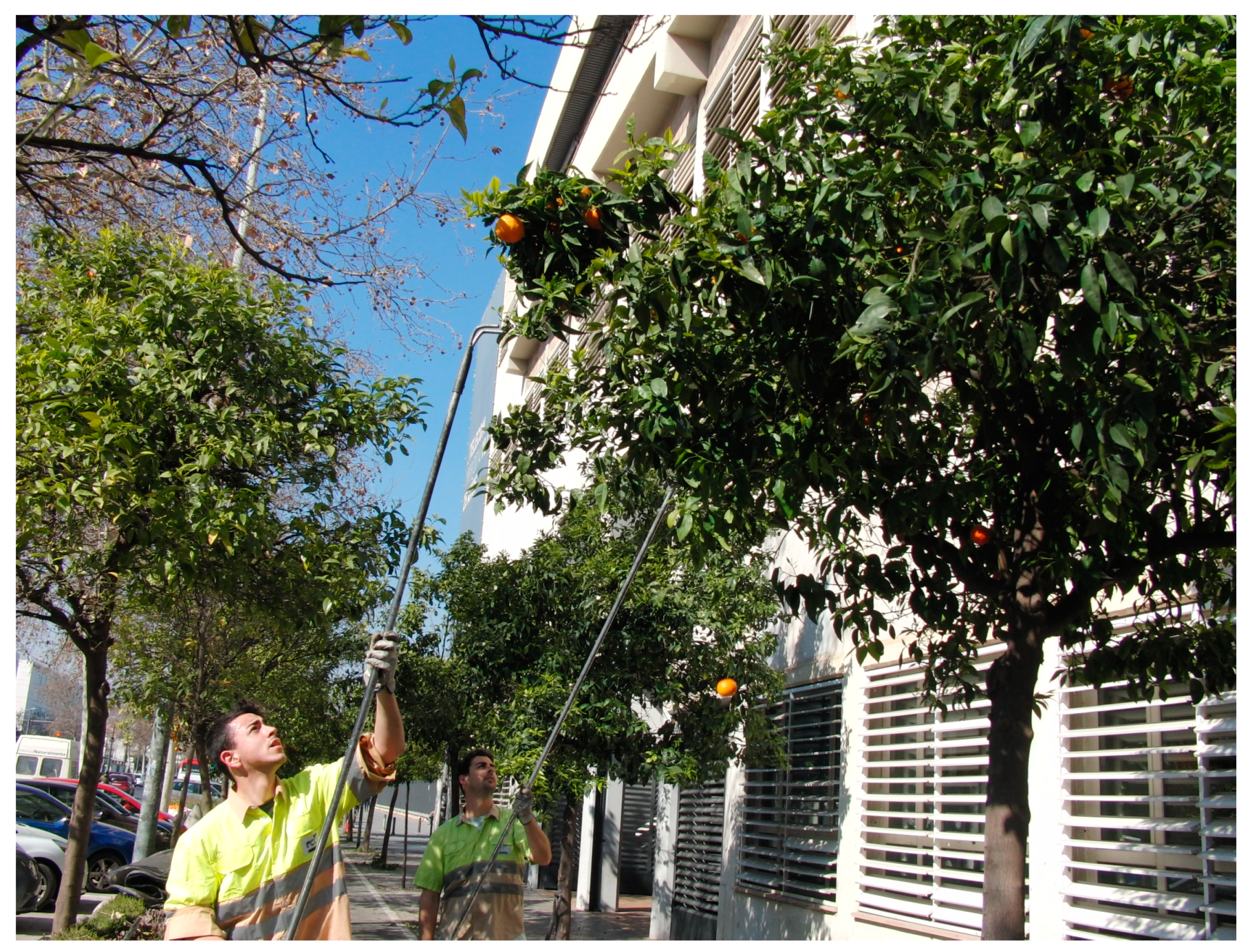
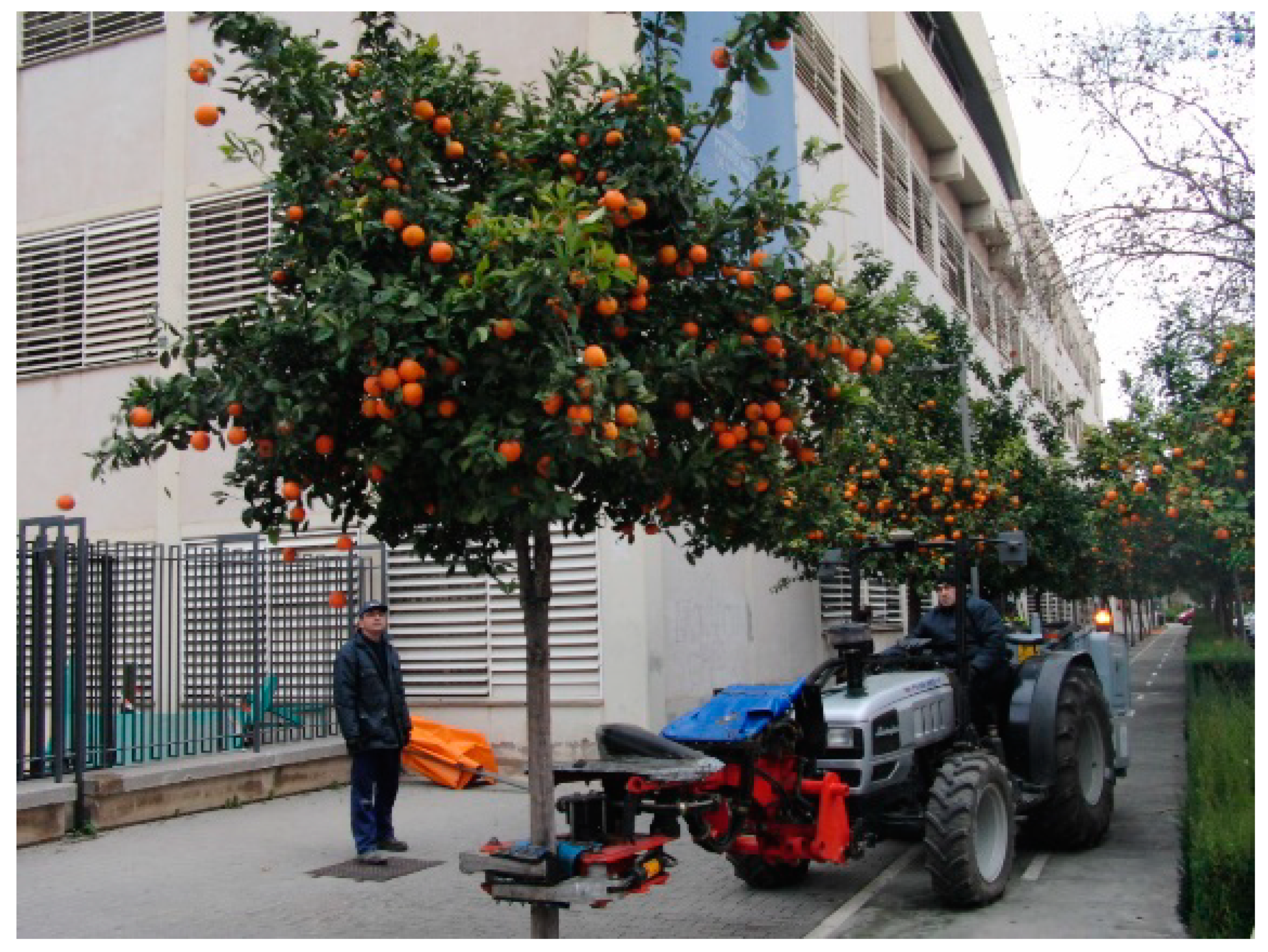
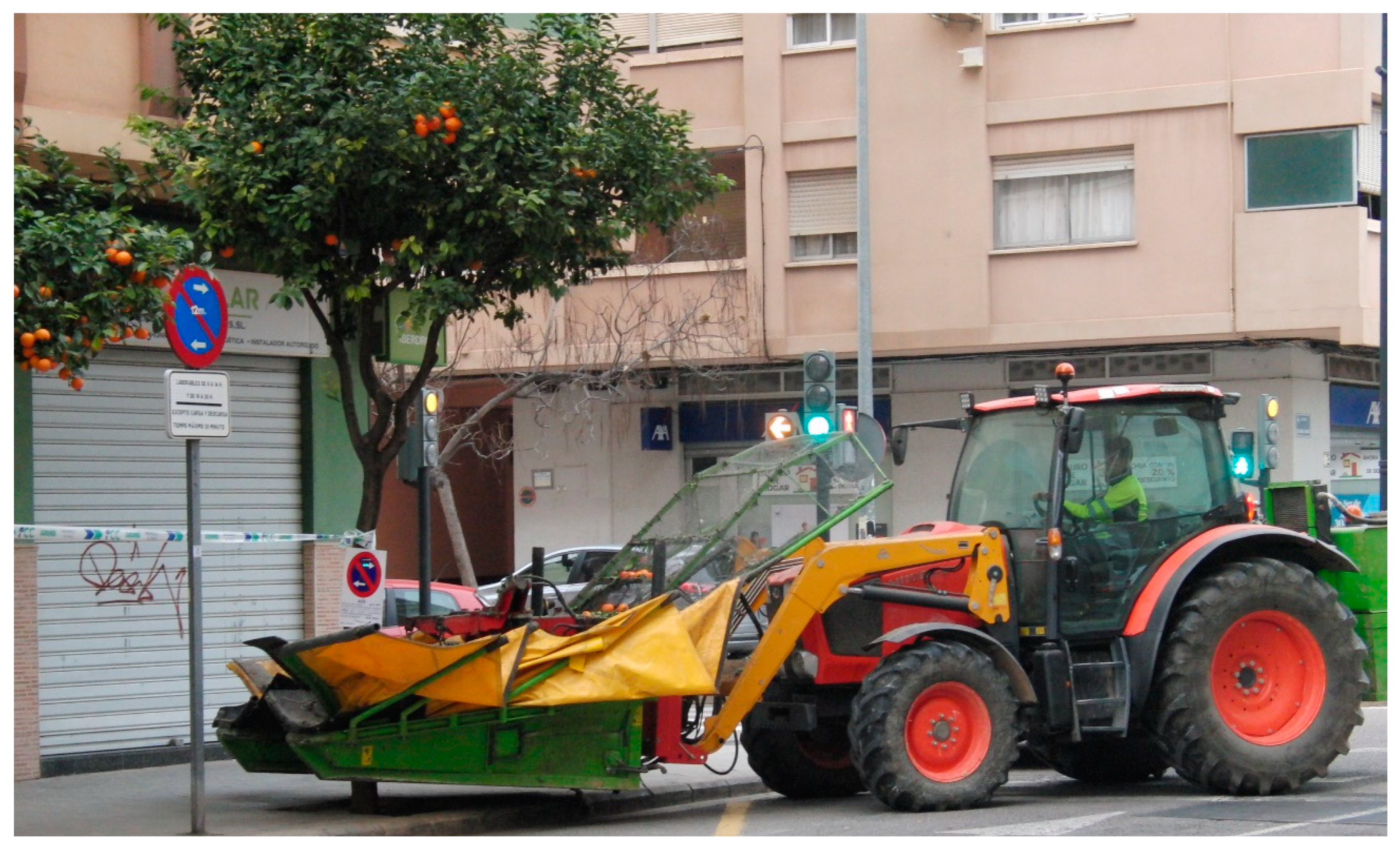
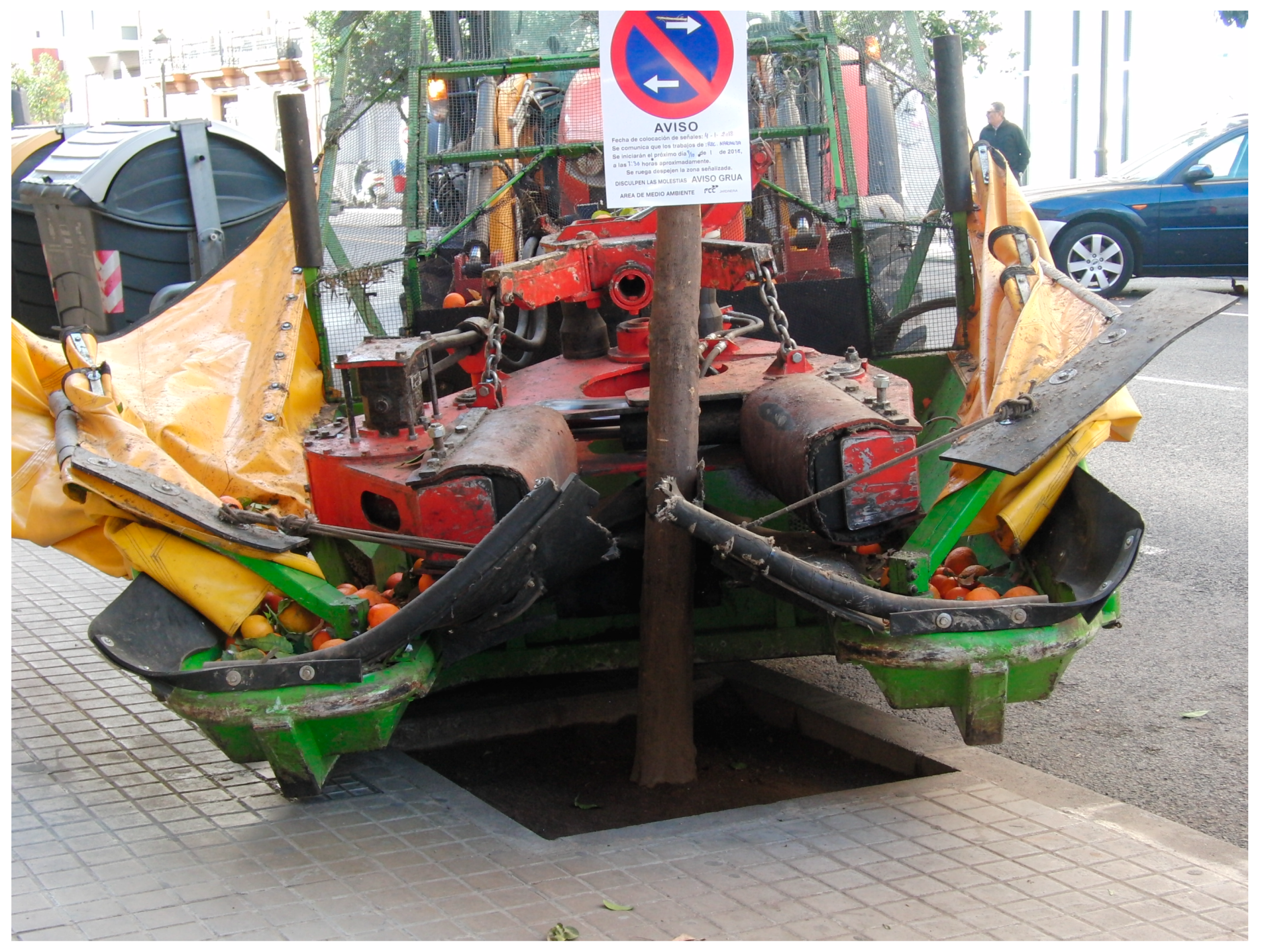
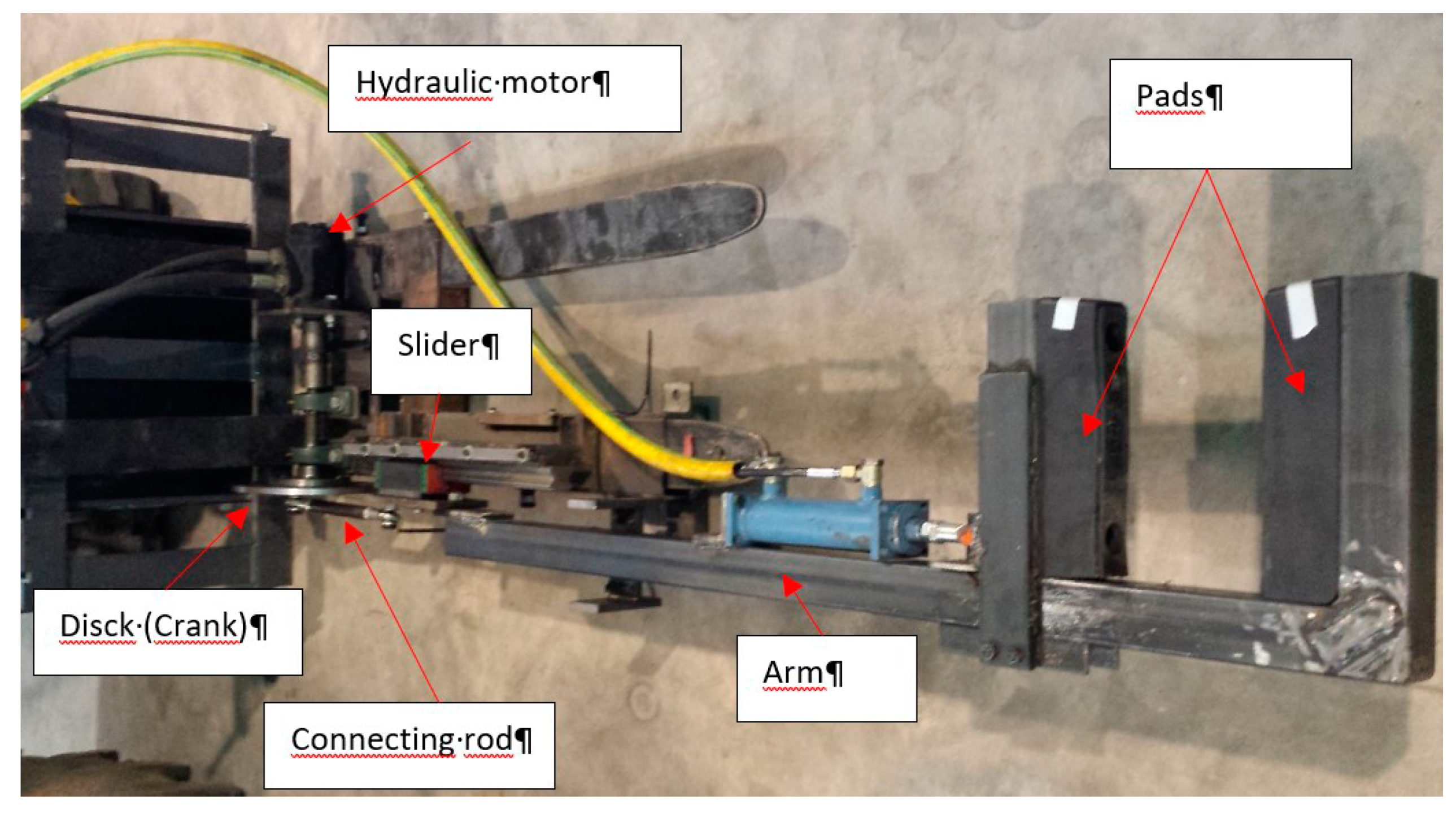
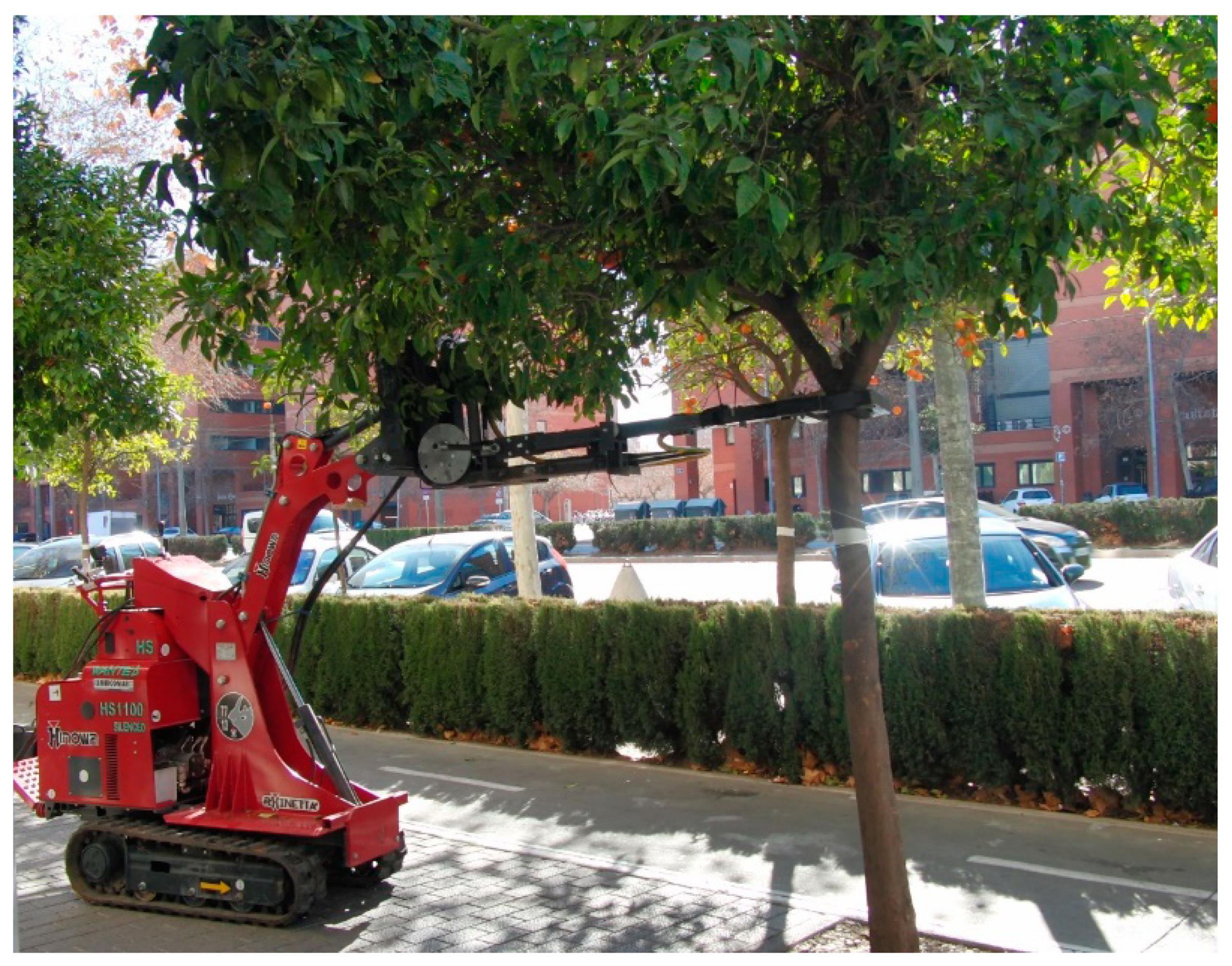
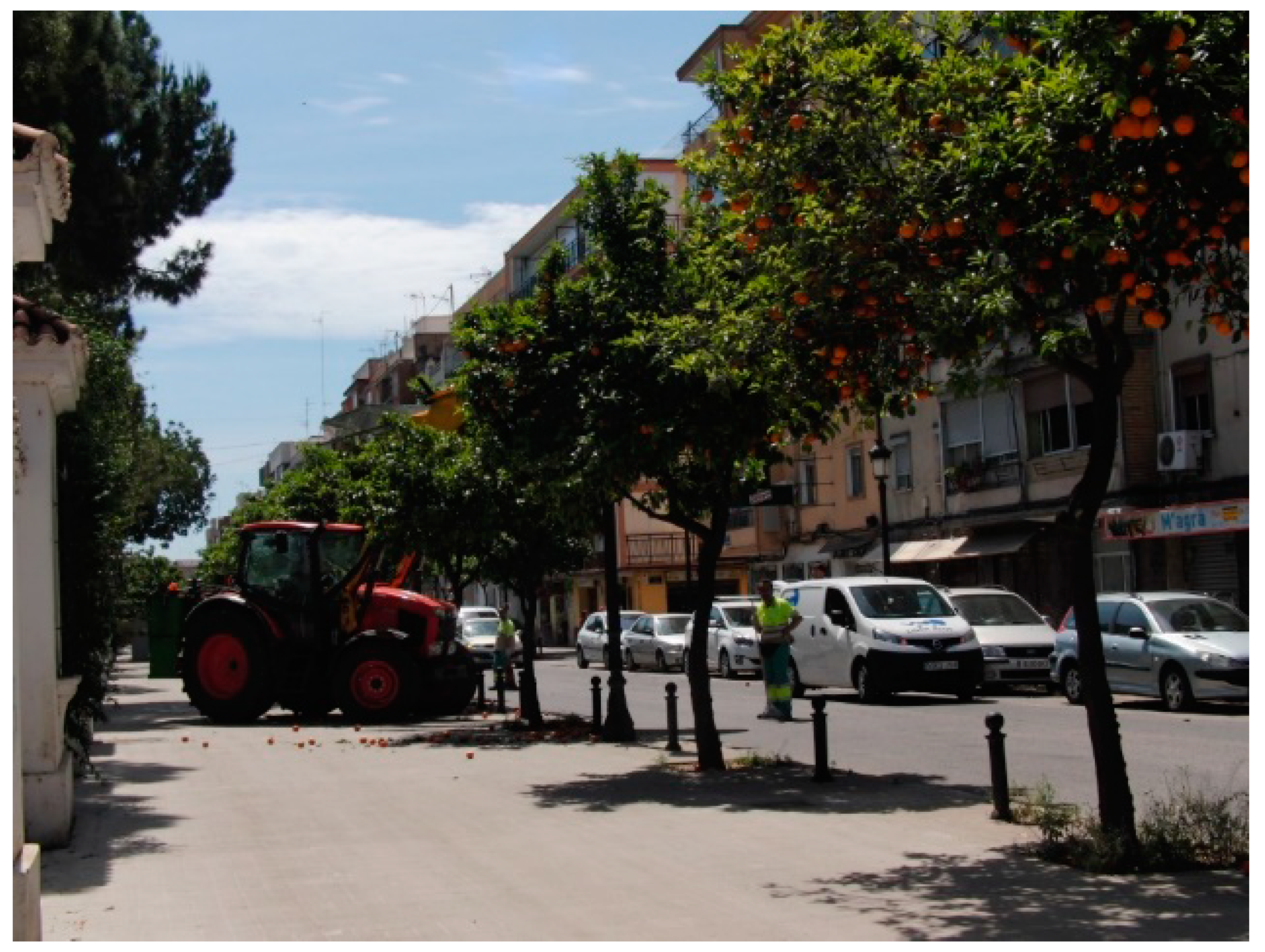
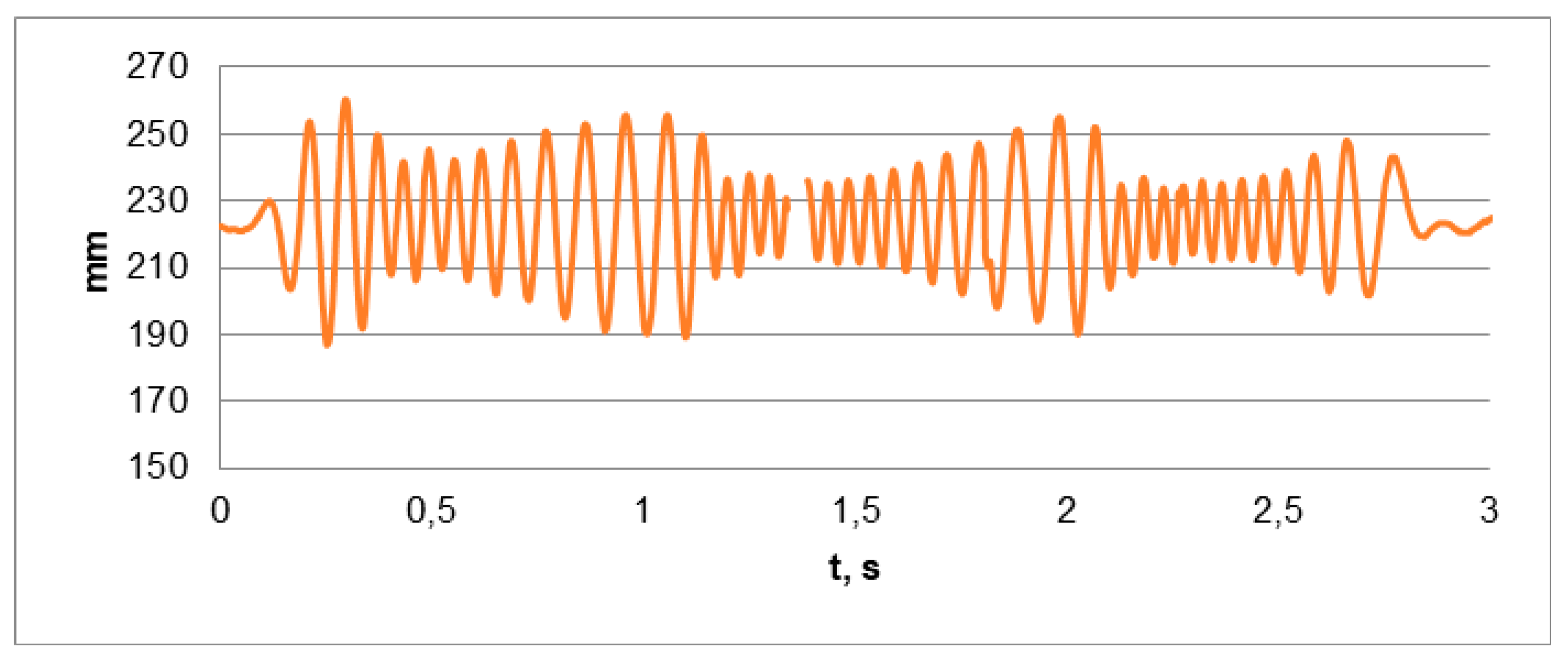
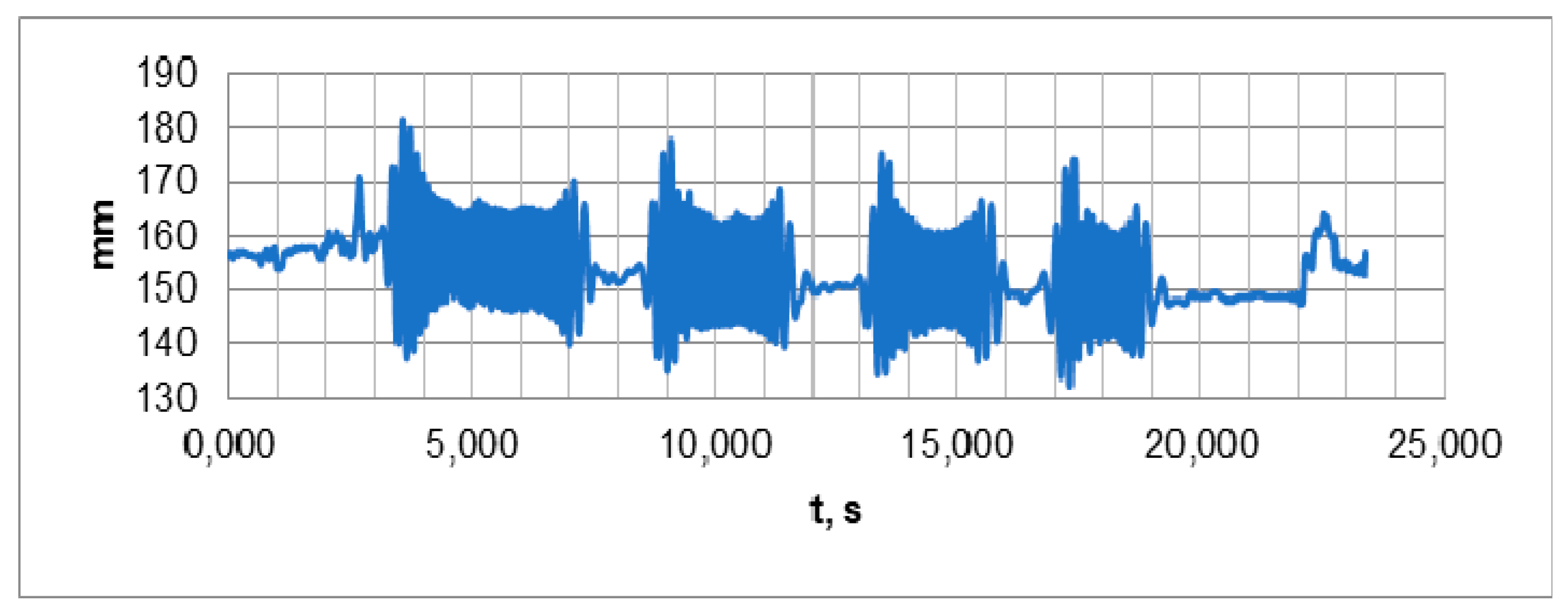
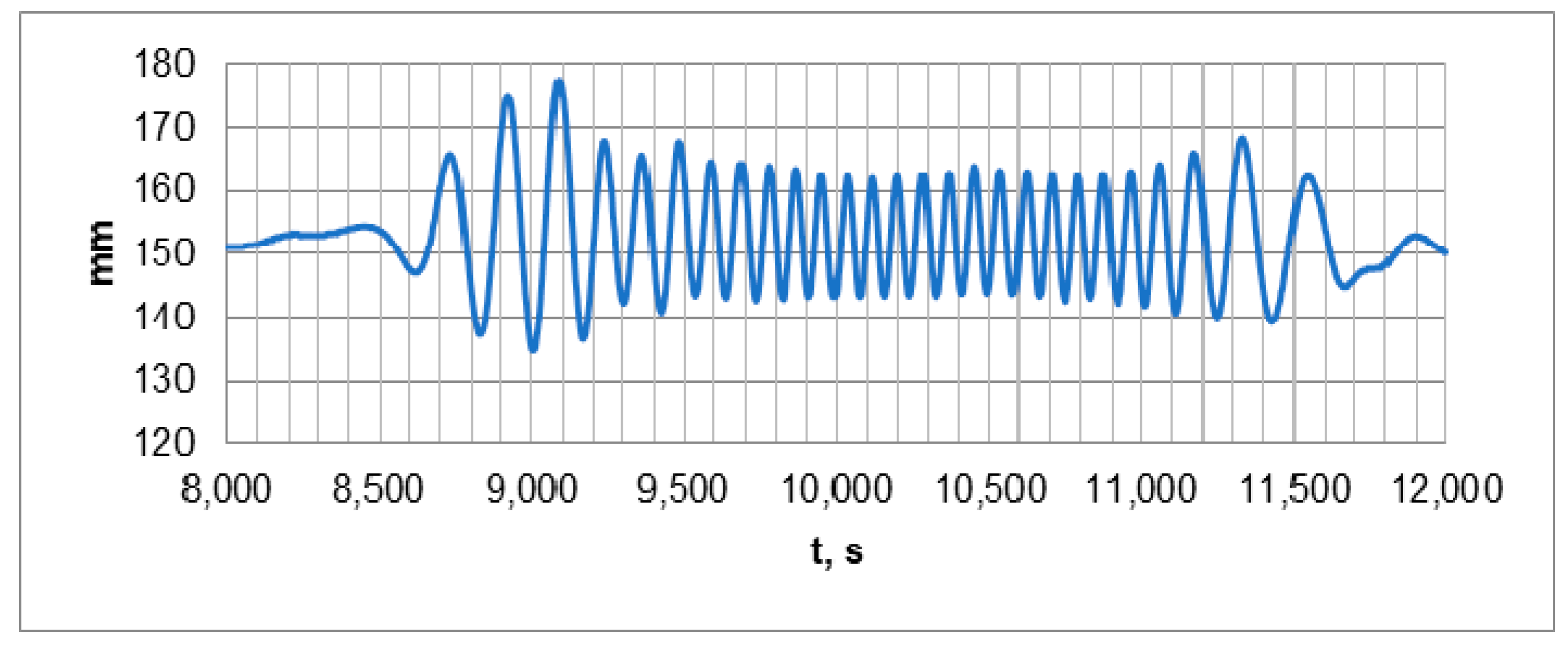
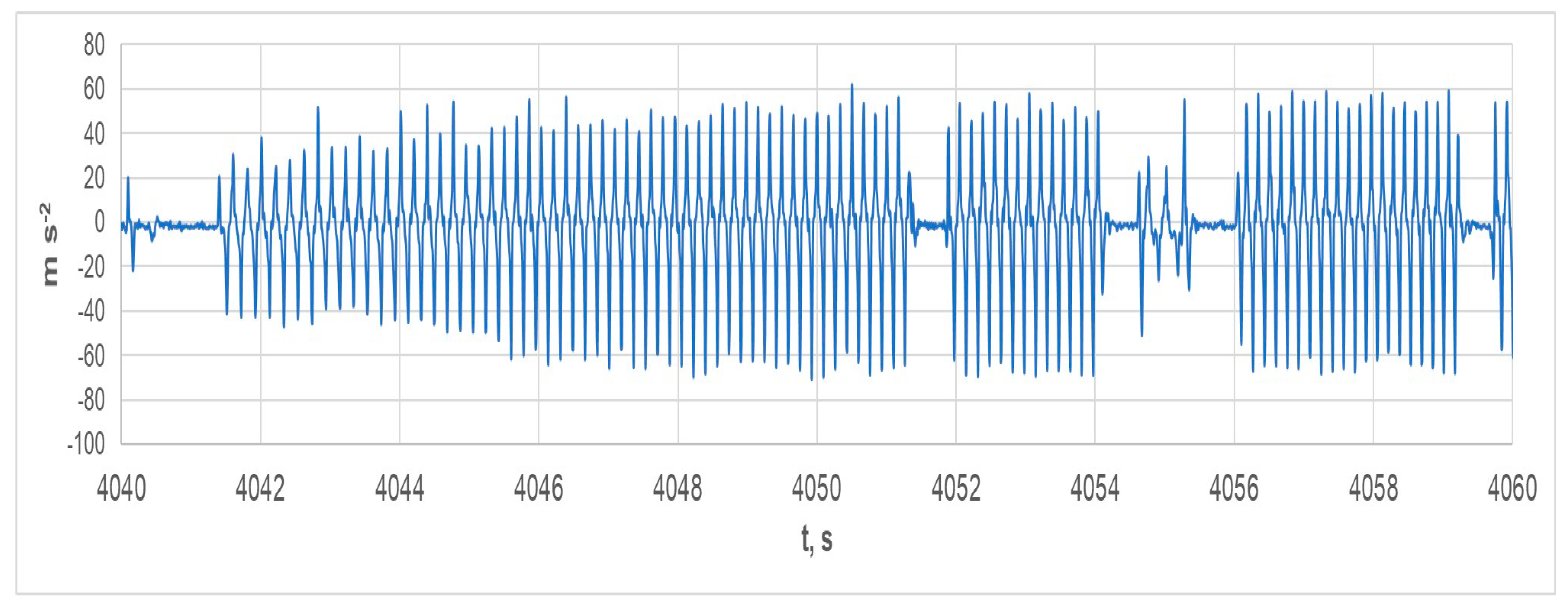

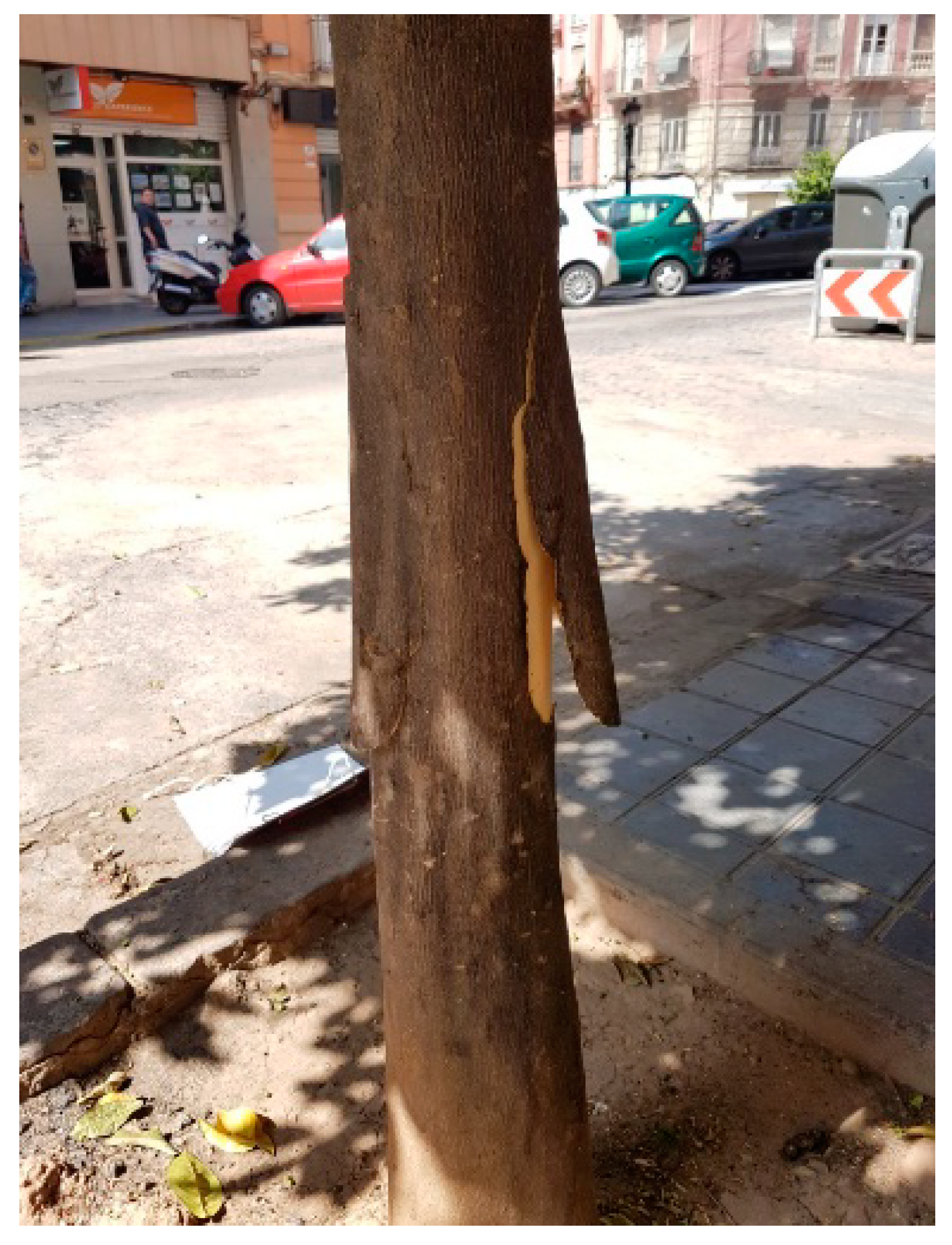
| Working Capacity | Detachment Percentage | Vibration | |
|---|---|---|---|
| Equipment | Number of Tested Trees (year) | Number of Tested Trees | Number of Tested Trees |
| Manual | 10 | ---- | ---- |
| Umbrella shaker | 69 (2017–2018) | 10 | 3 |
| Trunk shaker | 13 (2016–2017) | 13 | 5 |
| SMTA | 13 (2017–2018) | 13 | 13 |
| Trunk Displacement at 1.8 m above the Ground Peak-Peak, mm | Acceleration Peak-Peak, m s−2 | ||||||
|---|---|---|---|---|---|---|---|
| Equipment | Trunk Diameter mm | Clamping Point Height, m | Max | Stable Zone | Hz | Max | Stable Zone |
| Umbrella shaker | 160 | 0.6 | 17 | 10 | 12 | ||
| Trunk shaker | 120 | 0.9 | 66 | 38 | 10–21 | ||
| SMTA/Lamborghini | 160 | 1.7 | 150 | 125 | 4–5 | 120a | 100a |
| SMTA/John Deere | 150 | 1.8 | 170 | 140 | 7 | 325a | 270a |
| Detaching | Picking | Total | ||||||
|---|---|---|---|---|---|---|---|---|
| System | € h−1 | Tree h−1 | € Tree−1 | Num. Workers | Tree h−1 | € Tree−1 | Tree h−1 | € Tree−1 |
| Manual | 10 | 0.75 | 13.3 | 1 | 3.75 | 2.7 | 0.63 | 16.0 |
| Trunk shaker | 65 | 50.7 | 1.3 | 14 | 50.7 | 2.8 | 50.7 | 4.1 |
| T. shaker + umbrella | 70 | 20.2 | 3.5 | 7 | 20.2 | 3.5 | 20.2 | 7.0 |
| SMTA | 45 | 24 | 1.9 | 6 | 24 | 2.5 | 24 | 4.4 |
© 2019 by the authors. Licensee MDPI, Basel, Switzerland. This article is an open access article distributed under the terms and conditions of the Creative Commons Attribution (CC BY) license (http://creativecommons.org/licenses/by/4.0/).
Share and Cite
Torregrosa, A.; Molina, J.M.; Pérez, M.; Ortí, E.; Xamani, P.; Ortiz, C. Mechanical Harvesting of Ornamental Citrus Trees in Valencia, Spain. Agronomy 2019, 9, 827. https://doi.org/10.3390/agronomy9120827
Torregrosa A, Molina JM, Pérez M, Ortí E, Xamani P, Ortiz C. Mechanical Harvesting of Ornamental Citrus Trees in Valencia, Spain. Agronomy. 2019; 9(12):827. https://doi.org/10.3390/agronomy9120827
Chicago/Turabian StyleTorregrosa, Antonio, José María Molina, Montano Pérez, Enrique Ortí, Pilar Xamani, and Coral Ortiz. 2019. "Mechanical Harvesting of Ornamental Citrus Trees in Valencia, Spain" Agronomy 9, no. 12: 827. https://doi.org/10.3390/agronomy9120827
APA StyleTorregrosa, A., Molina, J. M., Pérez, M., Ortí, E., Xamani, P., & Ortiz, C. (2019). Mechanical Harvesting of Ornamental Citrus Trees in Valencia, Spain. Agronomy, 9(12), 827. https://doi.org/10.3390/agronomy9120827





